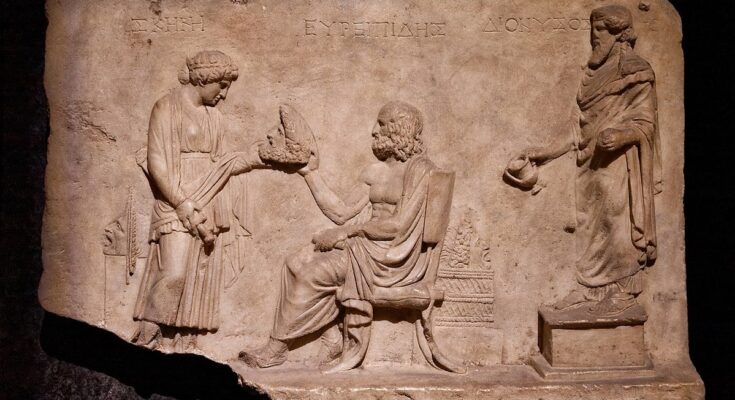In a groundbreaking find, University of Colorado (CU) scholars uncovered two Euripides fragments believed to have been forgotten. This discovery is deemed as one of the most significant in over half a century, reviving interest in ancient Greek drama.
From Egypt to the US
The journey began in November 2022. Basem Gehad, an archaeologist with the Egyptian Ministry of Tourism and Antiquities, unearthed a papyrus at the ancient site of Philadelphia in Egypt. Recognizing its potential significance, Gehad sent the papyrus to Yvona Trnka-Amrhein, an assistant professor of classics at CU Boulder. Trnka-Amrhein, already collaborating with Gehad on a project that recently discovered a colossal statue of Pharaoh Ramesses II, quickly realized the papyrus’s importance.
The artifact, measuring 10.5 square inches and containing 98 lines of text, was meticulously studied using high-resolution photographs. Egyptian law prohibits the removal of such artifacts from the country. Upon examining the papyrus, Trnka-Amrhein confirmed that the text was indeed an ancient Greek tragedy. She used the Thesaurus Linguae Graecae, a comprehensive digital database of ancient Greek texts maintained by the University of California, Irvine, to verify the fragments. Her findings suggested that the text contained previously unknown excerpts from the mostly lost plays of Euripides.
Collaboration and verification of find
Trnka-Amrhein enlisted the help of John Gibert, a renowned classics professor and expert in Euripides fragments at CU Boulder. Together, they embarked on an intensive analysis, scrutinizing the papyrus to decipher the text and confirm its authenticity. Their hard work paid off, revealing new material from two fragmentary Euripides plays, Polyidus and Ino.
The discovery includes 22 lines previously known in slightly varied versions. Astonishingly, 80 percent of the material was completely new. “We don’t think there has been a find of this significance since the 1960s,” Gibert said, emphasizing the rarity and importance of such a large and unusual papyrus today.
The Polyidus Plays
Polyidus retells an ancient Cretan myth involving King Minos and Queen Pasiphaë, who demand that the seer Polyidus resurrect their son Glaucus after he drowns in a vat of honey. Unlike many Greek tragedies, this play has a relatively happy ending.
Polyidus revives the boy using an herb he observed a particular snake using to revive another. The newly discovered fragment includes a scene during which Minos and Polyidus debate the morality of resurrecting the dead, offering a fresh perspective on this ancient myth.
The Ino Plays
Inversely, Ino presents a darker and more traditional tragic narrative. Greek god Dionysus‘ aunt and a member of the royal family of Thebes finds herself at the center of some family drama. In the new fragments, Ino is not the villainous stepmother, as previously thought, but rather a victim. Another woman assumes the role of the evil stepmother, seeking to eliminate Ino’s children.
According to scholars, the tables are ultimately turned, leading to a gruesome conclusion. The third wife of the king kills her own children and commits suicide. This twist offers a new ending to the traditional tale. However, Euripides’ pandemonic themes are still there: death, suicide, and revenge.
A significant academic endeavor
The process of verifying and interpreting these fragments has been rigorous. Gibert and Trnka-Amrhein’s claims will undoubtedly be subject to scrutiny from other experts in the field. However, their confidence is bolstered by the feedback they have already received. The CU scholars presented their findings to a group of 13 experts in Washington, D.C., in June. The first edition of the fragment has been accepted for publication, marking a significant milestone in their scholarly journey.
Gibert and Trnka-Amrhein plan to share their discoveries more widely, with presentations scheduled at institutions such as Dartmouth and Harvard. “John’s contacts and readers in the Euripides world have given us the reassurance we’re not going to have too much pie on our faces,” Trnka-Amrhein noted, expressing gratitude for the opportunity to work on such significant material and anticipation for the reactions of the broader academic community.
Forgotten Euripedes Plays
The discovery of these fragments is not only a major milestone for the CU but also a significant contribution to the study of ancient drama. The world awaits to hear of new insights the scholars will shed on Euripides’ works and the ancient world more broadly.



